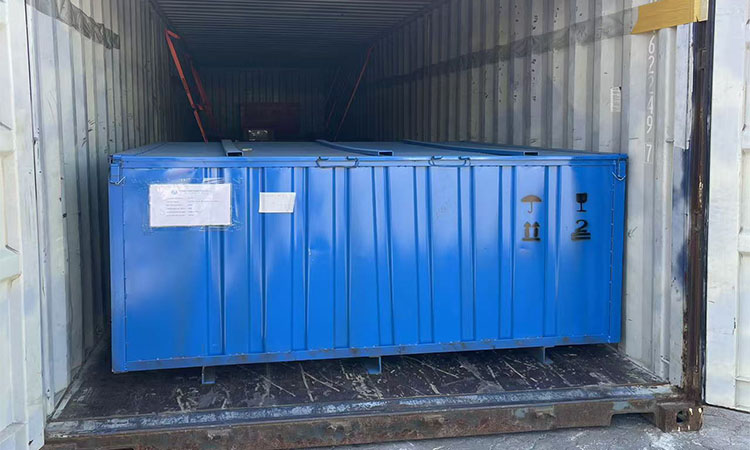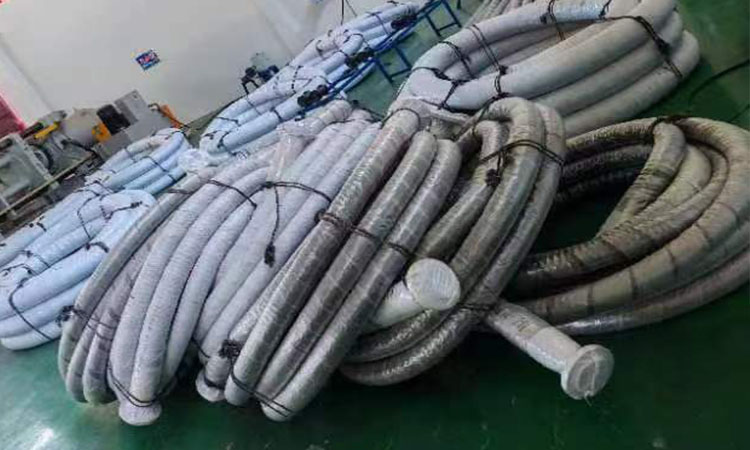Sino Mechanical Equipment is preparing to ship drilling hoses and other drilling tools to European customers.
Sino Mechanical Equipment is preparing to ship drilling hoses and other drilling tools to European customers.

What are oil drilling hoses?
Oil drilling hoses are flexible pipes connected to offshore or onshore drilling platforms to transport critical fluids such as high-pressure drilling fluid, water, fuel oil, and lubricating oil. They are the "arteries" and "veins" of the drilling circulation system, crucial for the safety and efficiency of drilling operations.
These hoses are not ordinary rubber hoses, but high-tech industrial products specifically designed and manufactured to meet the stringent requirements of their application and the harsh environments they operate in.
Oil drilling hoses are the "blood vessels" of drilling operations, responsible for transporting various critical media. Their classification is mainly based on function, working pressure, and structure.

Classification of oil drilling hoses
I. Classification by Function and Application (Most Commonly Used Classification Method)
This is the most intuitive classification method, directly corresponding to the specific use of the hose on the drilling platform.
1. Drilling Fluid Hose
This is the most core and common hose in drilling operations, connecting the mud pump to the riser (or sprue) for transporting high-pressure drilling fluid (mud).
Features: Extremely high pressure resistance, high wear resistance, and high corrosion resistance requirements.
Common Types:
Vibration Hose: Installed at the mud pump outlet to absorb the pulses and vibrations generated by the pump, protecting downstream pipelines.
Riser Hose: Connected to the riser on the derrick, extending downwards to the sprue.
1. Water Spinner: Connected below the swivel nozzle, it moves up and down with the moving system, serving as a portable high-pressure mud channel. It requires extremely high flexibility and fatigue resistance.
2. Choke & Kill Hose:Used to connect the choke manifold and kill manifold, it is a critical safety device in well control operations.
Features: Must be able to withstand extremely high pressures (usually matched to the pressure rating of the blowout preventer assembly) and possess excellent corrosion and hydrogen sulfide resistance. Typically red or yellow for warning purposes.
Functions:
Kill Operations: Pumping high-density drilling fluid into the well to control blowouts.
Choke Operations: After the blowout preventer is closed, controlling the wellhead back pressure through a choke valve to safely remove formation fluids.
3. Oil Transfer Hose: Used to transport crude oil, diesel oil, lubricating oil, and other petroleum products between ships and platforms or storage tanks.
Features: Features a multi-layered oil-resistant rubber structure, usually with buoyancy materials or reinforcing layers to adapt to floating or towing operations at sea.
4. Chemical and Brine Hoses
Used for conveying chemical media such as drilling fluid additives, completion fluids, and brine.
Features: The inner lining is specially designed according to the chemical properties of the conveyed medium, providing excellent chemical corrosion resistance.
5. Air/Ventilation Hoses
Used to provide compressed air or ventilation for confined spaces or equipment.
Features: Relatively low operating pressure, with a focus on lightweight and flexibility.
6. Fire-Resistant Hoses
Used for conveying fuel oil or hydraulic oil in hazardous areas (such as around drilling rigs), requiring structural integrity and functionality for a period of time in flames.
Features: The outer layer is wrapped with special fire-resistant materials (such as ceramic fiber cloth).

II. Classification by Operating Pressure Rating
Pressure is a key parameter for hose selection.
Low-Pressure Hoses: Operating pressure is typically below 1500 psi (100 bar), such as some ventilation and water supply hoses.
Medium-pressure hoses: Operating pressures range from 1500 psi to 5000 psi (100 - 345 bar), such as some oil and chemical hoses.
High-pressure hoses: Operating pressures range from 5000 psi to 10000 psi (345 - 690 bar) or even higher, such as drilling fluid hoses and vibratory hoses.
Ultra-high-pressure hoses: Operating pressures exceed 10000 psi (690 bar), mainly used for choke & kill manifolds and high-pressure jet operations in deep and ultra-deep wells.
III. Classification by Structure and Reinforcement Layer Type
The structure of the hose determines its pressure resistance and flexibility.
Spiral wire wound hose:
Structure: Several layers of high-strength steel wire are wound between the inner and outer rubber layers of the hose, arranged in a spiral pattern.
Features: Highest pressure resistance; the mainstream structure for drilling fluid hoses and choke & kill hoses. Good resistance to pulse fatigue, but relatively large bending radius.
Braided Steel Wire Reinforced Hose:
Structure: The reinforcing layer is made of braided steel wire, usually one, two, or more layers.
Features: Better flexibility, smaller bending radius, but pressure resistance is generally lower than that of spiral wound hoses of the same specifications. Commonly used in low-to-medium pressure applications, such as hydraulic hoses and oil transfer hoses.
IV. Classification by Industry Standards and Specifications
The petroleum industry has strict standards and specifications; hoses must meet the corresponding standards to be used.
API Specifications: American Petroleum Institute standards are internationally recognized standards.
API 7K: Drilling and Workover Equipment Specification, which provides detailed regulations for the design, testing, and manufacture of drilling fluid hoses (including vibratory hoses, water hoses, etc.).
API 16C: Choke & Kill Equipment System Specification, which specifically sets mandatory requirements for the performance, testing, and certification of choke & kill hoses (referred to as "choke & kill flexible tubing" in this specification).
ISO Standards: Standards from the International Organization for Standardization, equivalent or mutually recognized with API standards in many respects.
Corporate Standards: Individual oil companies or service companies (such as Shell, Schlumberger, etc.) may have their own more stringent internal standards.
How to select drilling hoses?
Summary and Selection Considerations: When selecting oil drilling hoses, the following factors must be considered comprehensively:
Media: What is being transported? (Drilling mud, crude oil, chemicals, air?)
Operating Pressure: What are the maximum operating pressure and peak pressure?
Temperature: The operating temperature range of the media and the environment.
Application Scenario: Is it for static or dynamic use? (For example, a hose is a typical example of dynamic use.)
Compliance: Must meet the industry standards required by the operating area and the client (such as API 7K, API 16C).
Oil drilling hoses are a technology-intensive product with clear classifications and strict selection criteria, directly affecting the efficiency, cost, and safety of drilling operations.

Suppliers of drilling hoses
Sino Mechanical Equipment is a professional drilling equipment and tool supplier in China, located in Shengli Oilfield, China's second largest oilfield. For decades, it has provided reliable drilling equipment and tools for drilling services both domestically and internationally.


